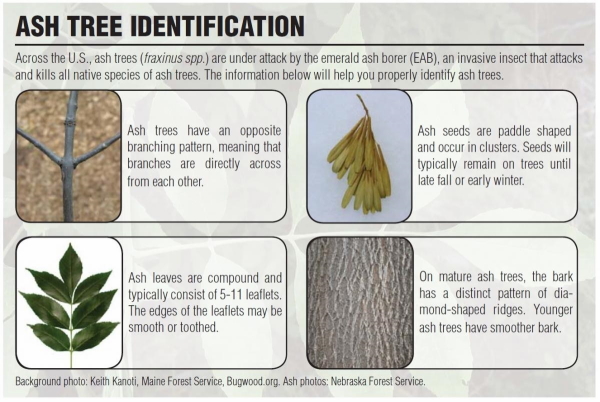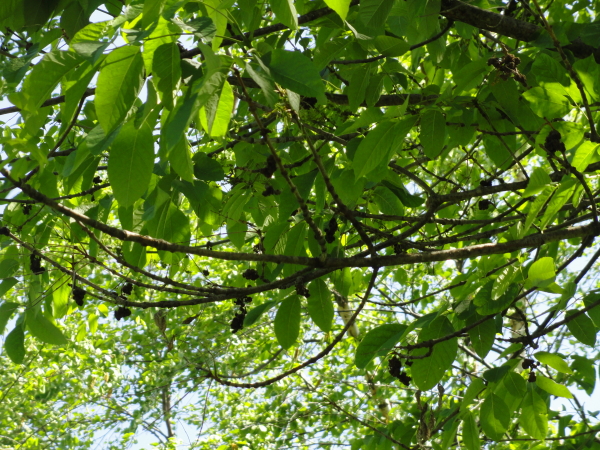Emerald Ash Borer
Before June 2002, no one had found the emerald ash borer in North America. It was first discovered in southeast Michigan and has spread since. On June 9, 2006, it appeared in northern Illinois and has moved south each year. In 2012, a confirmed infestation was found in Marion County, IL. In May 2015, the pest was confirmed in the St. Louis, MO area.
This invasive pest can kill ash trees within two years of infestation. Ash trees often show no symptoms until at least a year after the infestation, which can be too late or cause significant die-back.

Emerald Ash Borer (EAB) - Typical Service Dates:
The insecticide application is required only once per year and needs to be applied during the month of June.
At TurfGator, we have been monitoring this devastating invasive pest for several years, and in a proactive approach, knowing that healthy tress does not show early signs of infestation we started offering preventative treatments in 2013.
After extensive research and advice from industry experts and state authorities, we decided to offer an annual basal trunk spray application. This method is non-destructive and more effective than other treatments. When sprayed on a tree's trunk, the insecticide penetrates the bark and enters the tree’s vascular system. It is then transported upward to the feeding areas. This method has been proven to control the emerald ash borer systemically without damaging the tree.
State Campaign: "Do not move firewood - Help stop the spread of the Emerald Ash Borer (EAB)." You may see billboards displaying this message. The pest spreads rapidly to new counties and states each year. People often cut down dead trees for firewood. However, ash trees can still harbor the EAB under the bark. Moving the firewood allows the pest to spread to new areas. Illinois is currently a Federally Quarantined state by the USDA.
Our GatorGuarantee for all customers: If you're not satisfied with our service, we'll return to your property, free of charge. And if you're still not happy, we'll refund your last application and pay you $25 for your trouble!
Let's Get Started
There are no obligations and estimates are always FREE. To get started we will need some basic address and contact information and then we can provide you with pricing.
Additional Recommended Services
Ornamental trees, shrubs and floral plants will add beauty to any home or business and can significantly increase the value of any property. Our tree and shrub insect & disease control program will eliminate and restrain damaging insects.
Mulch adds aesthetics with a uniform color and gives any landscape area a finished natural look. A mulched area conserves water by preventing evaporation, lowers the soil temperature during the summer and builds beneficial organic matter.
We offer Pest Control Services operated under the company name of The Pest Guys, which is State licensed by the Illinois Department of Health. We offer several pest control solutions to keep those unwanted pests away like mosquitoes, ants and spiders.
Emerald Ash Borer FAQ's
In 2002, Michigan first reported the emerald ash borer, and it has since spread to other states. Currently, this devastating pest has been confirmed in over 20 states.
The adult beetle is dark metallic green in color, ½ inch-long and 1/8 inch-wide.
The natural range of the emerald ash borer is from eastern Russia, northern China, Japan and Korea. Before June of 2002, it had never been found in North America.
No one knows for sure, but it most likely came in ash wood used for stabilizing cargo in ships or from the wood used for packing or crating heavy consumer products.
All types of ash tree species are susceptible. Larval galleries have been found in trees or branches measuring as little as 1-inch in diameter.
The below guide should help in identifying ash trees, however, feel free to call our office anytime and we will send out a technician, free of charge, to check the trees you have on your property and let you know if you have any ash trees.
The emerald ash borer destroys the water and nutrient-conducting tissues under the bark, causing the canopy of infested trees to thin above the affected trunk and branches. Heavily infested trees show canopy die-back, starting at the top. Within one year, one-third to one-half of the branches may die. Most of the canopy will die within two years after symptoms first appear.
Healthy ash trees are also vulnerable, though beetles tend to lay eggs or feed on stressed trees. When emerald ash borer populations are high, small trees may die within 1-2 years of infestation, while large trees can be killed in 3-4 years.
